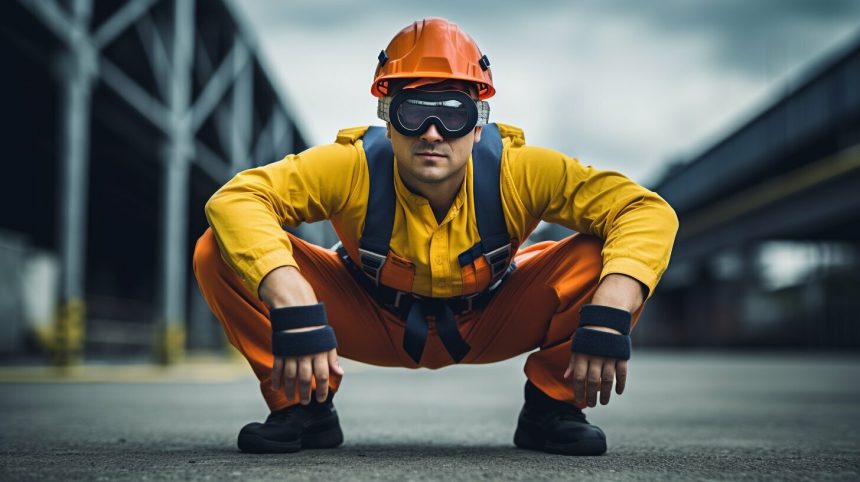Sports participation is an excellent way to stay active and maintain a healthy lifestyle. However, it can also come with the risk of injury. Whether you’re a seasoned athlete or a beginner, it’s essential to take proactive measures to promote safety and reduce the chances of getting hurt.
There are several practical steps you can take to minimize the risk of injury when participating in sports. From warming up and cooling down properly to using the right equipment and gear, each strategy can make a significant difference in promoting safety and preventing injuries.
Key Takeaways
- Proactive measures are necessary to reduce the risk of injury in sports participation.
- Warming up and cooling down before and after physical activity is crucial in injury prevention.
- Appropriate equipment and gear are essential in safeguarding yourself during sports participation.
- Proper technique and form can reduce the likelihood of injuries caused by incorrect movements.
- Listening to your body, resting when needed, and staying hydrated are all crucial in preventing injuries.
Warm Up and Cool Down Properly
Warming up and cooling down are essential parts of any physical activity, including sports. Not only do they prepare your body for exercise, but they also help prevent injuries. By properly warming up and cooling down, you can minimize the risk of strains, sprains, and other injuries.
Before starting any sports activity, spend at least 5-10 minutes warming up. This can include activities like light jogging, jumping jacks, and stretching. The goal is to raise your heart rate, increase blood flow to your muscles, and loosen up your joints.
When cool down, take at least 5-10 minutes to gradually decrease the intensity of your activity. This can include activities like slow jogging, walking, and stretching. Cooling down allows your body to gradually return to its normal state and helps prevent muscle soreness and stiffness.
Remember, warming up and cooling down are just as important as the main activity itself. Don’t skip them!
Use Proper Equipment and Gear
Using appropriate equipment and gear is crucial in preventing injuries during sports participation. Wearing the right gear protects your body from impact, friction, and other potential forms of harm. It is also important to ensure that your equipment is in good condition and fits you properly.
For contact sports such as football or hockey, you may need to use helmets, mouthguards, and pads to protect your head, teeth, and joints. For activities such as cycling or rock climbing, you will need to use specialized tools and gear that are appropriate for the activity and terrain.
Before buying any sports gear, always read the manufacturer’s instructions and recommendations. Learn how to properly maintain and care for your gear, replacing it as necessary. This will help ensure that it remains effective and functional in preventing injuries.
Follow Proper Technique and Form
One of the most critical aspects of injury prevention in sports is maintaining proper technique and form. Whether you’re throwing a ball, kicking a ball, or shooting a basket, using proper form can help you avoid injuries caused by incorrect movements.
Improper form can put undue stress on your joints, leading to sprains, strains, and other soft-tissue injuries. Therefore, it’s essential to learn the correct technique for your chosen sport and practice it consistently to reduce the risk of injury.
Consult with a coach or experienced athlete to learn proper technique and form. They can provide you with expert advice and feedback to help you improve your movements and reduce the risk of injury. Additionally, incorporating strength and flexibility exercises into your training routine can help you maintain proper form and technique.
Remember, using proper technique and form not only reduces the risk of injury but can also improve your performance in your chosen sport. By prioritizing proper form and technique, you can enjoy sports safely while minimizing the chances of getting injured.
Listen to Your Body and Rest When Needed
One of the most important things you can do to reduce your risk of injury when participating in sports is to listen to your body and rest when needed. It can be tempting to push yourself to the limit, but ignoring your body’s signals can lead to overuse injuries, fatigue, and burnout.
To prevent this from happening, take breaks when you feel tired or sore. Alternate high-intensity workouts with low-intensity activities, and avoid pushing yourself too hard too quickly. If you experience pain or discomfort, stop immediately and seek medical attention if necessary.
Rest is essential for recovery and injury prevention, so make sure to prioritize it in your training regimen. Aim for at least one or two days of rest per week, and don’t hesitate to take additional time off if you feel like you need it.
Remember: pushing through the pain is never worth the risk of a serious injury.
Stay Hydrated and Fuel Your Body Properly for Injury Prevention
Proper hydration and nutrition are essential for minimizing the risk of injuries when participating in sports. Dehydration can lead to muscle cramps, fatigue, and poor performance, while insufficient nutrients can compromise your body’s ability to recover and repair.
To stay hydrated, drink plenty of water before, during, and after physical activity. Avoid sugary drinks, as they can lead to dehydration and provide little nutritional value. Additionally, consider adding electrolyte-rich drinks to your routine, as they can help replenish your body’s fluids and minerals lost during exercise.
Eating a balanced diet that includes carbohydrates, proteins, and healthy fats is crucial for fueling your body properly. Carbs provide the necessary energy for physical activity, while proteins help maintain muscle mass and repair tissues. Healthy fats help regulate hormone levels and support brain function. Eating a variety of colorful fruits and vegetables can also provide essential vitamins and minerals that aid in injury prevention and recovery.
Before engaging in sports, plan your meals and snacks to ensure you have adequate fuel. During prolonged physical activity, consider consuming snacks or drinks that contain carbohydrates to maintain energy levels. After physical activity, aim to eat a meal or snack that contains a combination of proteins and carbohydrates to promote muscle recovery and replenish energy stores.
By implementing proper hydration and nutrition strategies, you can ensure that your body is adequately prepared for physical activity, reducing the risk of injuries and promoting optimal sports performance.
Build Strength and Flexibility
Building strength and flexibility is crucial for injury prevention and for achieving optimal sports performance. When your muscles are strong and flexible, they can handle the demands of physical activity more effectively, reducing the risk of injury.
Strength training helps to build muscle mass, improve bone density, increase joint stability, and enhance overall physical performance. It also helps to correct muscle imbalances and improve posture, reducing the likelihood of injury caused by improper movements.
Flexibility, on the other hand, is necessary for maintaining proper joint range of motion and preventing muscle strains. Stretching exercises help to improve flexibility, reducing the likelihood of injuries caused by tight muscles.
It’s important to note that building strength and flexibility takes time and consistent effort. It’s not something that can be achieved overnight, so it’s important to be patient and persistent in your training.
Consult a qualified trainer or coach to develop a strength and flexibility training program that meets your specific needs and goals. Incorporate exercises and stretches that target all major muscle groups and joints, and gradually increase the intensity and duration of your training as you progress.
Remember that proper technique and form are crucial when performing strength and flexibility exercises. Improper form can increase the risk of injury, so be sure to seek guidance if you’re unsure about how to perform a particular exercise.
By consistently incorporating strength and flexibility training into your sports routine, you’ll be better equipped to handle the physical demands of your chosen activity, reducing the risk of injury and improving your overall performance.
Conclusion
Participating in sports is an excellent way to stay active and healthy, but it’s also important to prioritize safety and injury prevention. By implementing the strategies and advice presented in this article, you can take proactive steps to reduce your risk of injuries and ensure a safer sports environment for yourself and others.
Remember to warm up and cool down properly before and after physical activities, use appropriate equipment and gear for your sport, and maintain proper technique and form. Listen to your body’s signals and rest when needed, stay hydrated, and fuel your body with the right nutrients.
Building strength and flexibility is also crucial in reducing the likelihood of injuries. By incorporating exercises and stretching routines into your sports routine, you can improve your overall physical performance and minimize the chances of getting hurt.
Ultimately, staying safe and injury-free while participating in sports requires a combination of preparation, awareness, and responsible decision-making. By following the tips and advice outlined in this article, you can enjoy sports safely and confidently.










